Horsing Around: Reconnecting Emerging Adults with Rough and Tumble Play
Brydon Yao's thesis, Horsing Around: Reconnecting Emerging Adults with Rough and Tumble Play, situates itself in the tension between growing up and acceptable forms of play. Mainstays of physical play during childhood, such as roughhousing, are great for stress mediation and resilience development. Yet, it is strongly discouraged as we grow up and face more stresses and adversities. The project interrogates the notion of juvenile physical play through a series of designs that set out to re-engage emerging adults with rough-and-tumble play.
"While we see the majority of literature studying the benefits of play for children, adulthood is understudied even though
the benefits of play do not go away."
- Dr. Brooke Feeney, Professor of Psychology

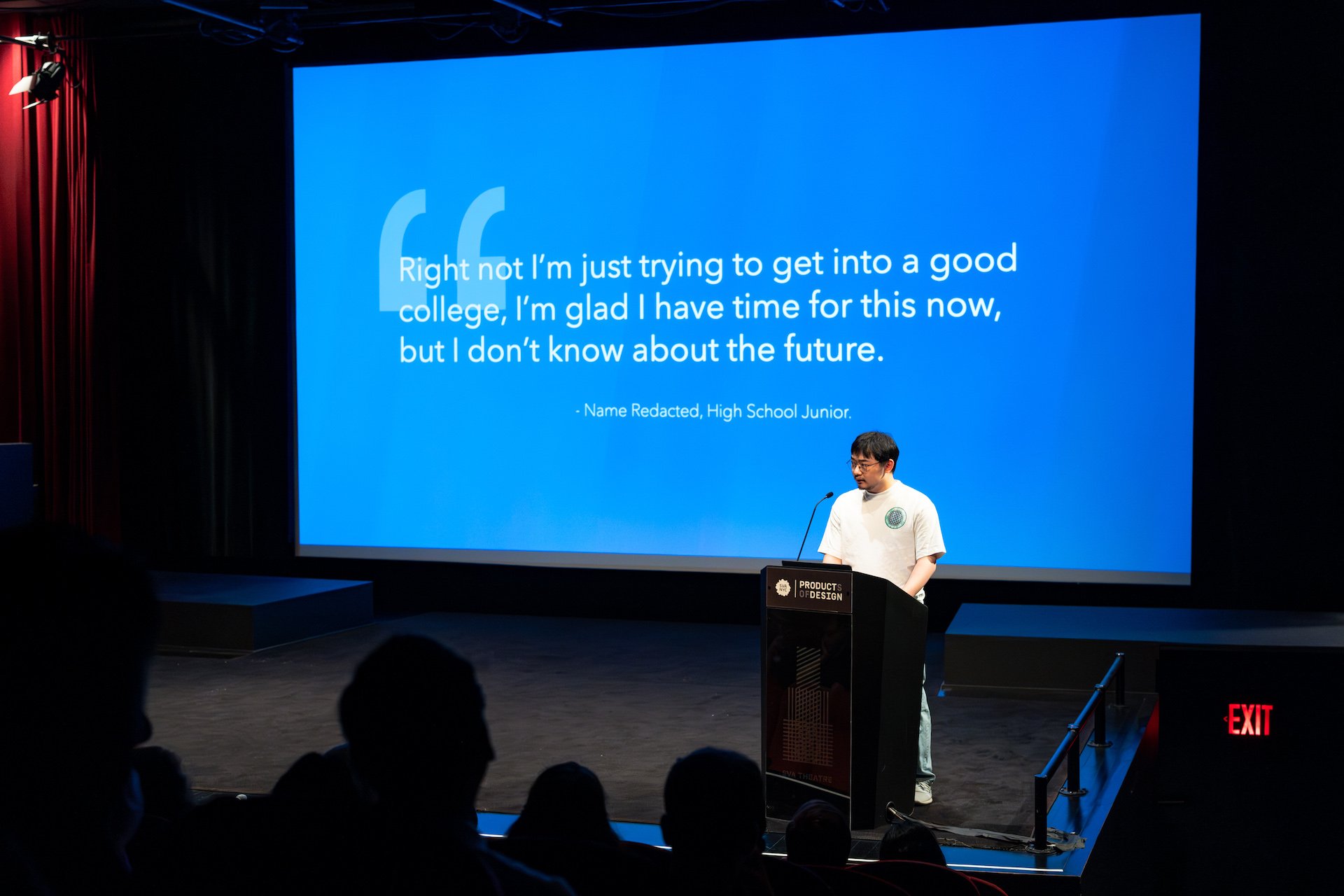
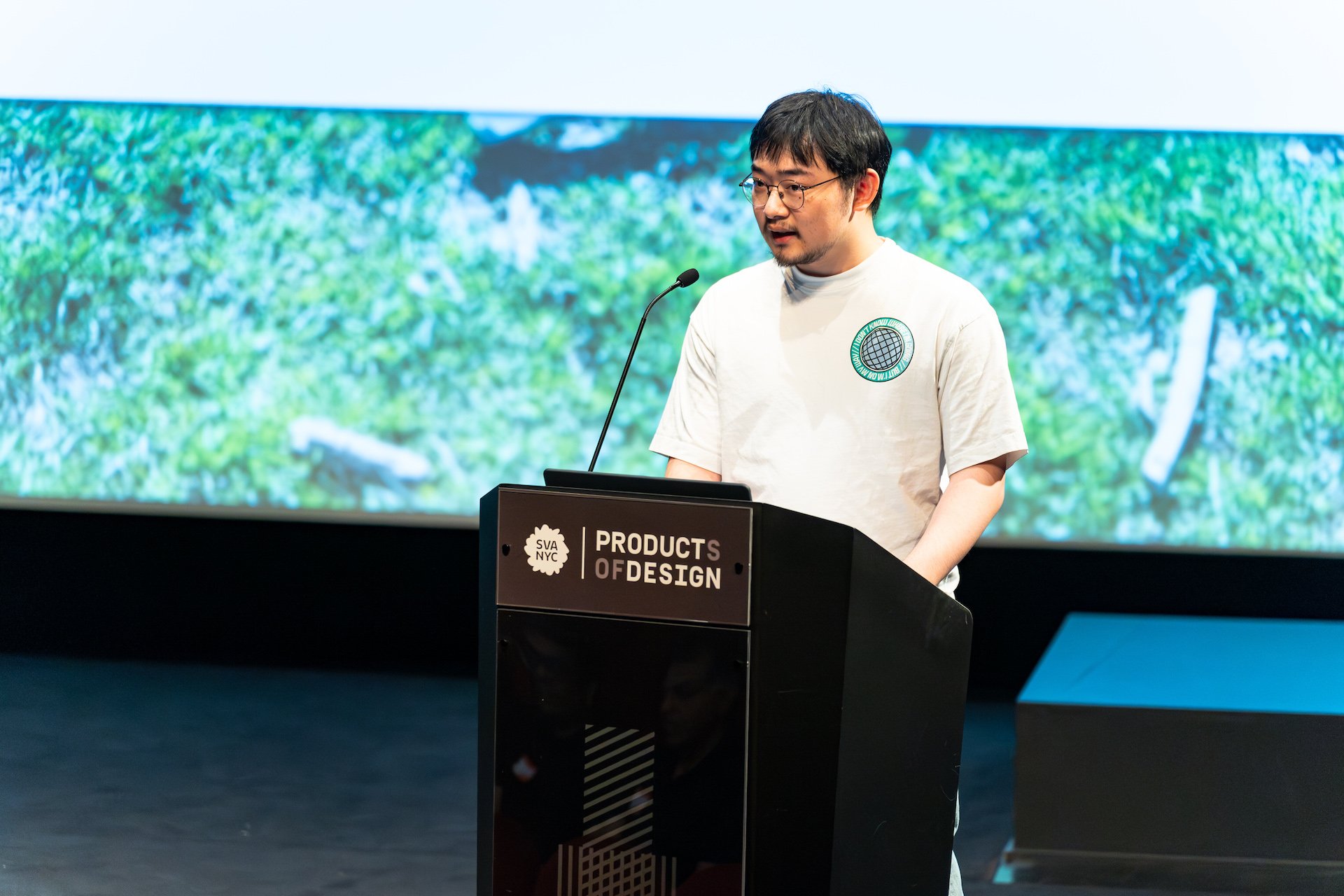
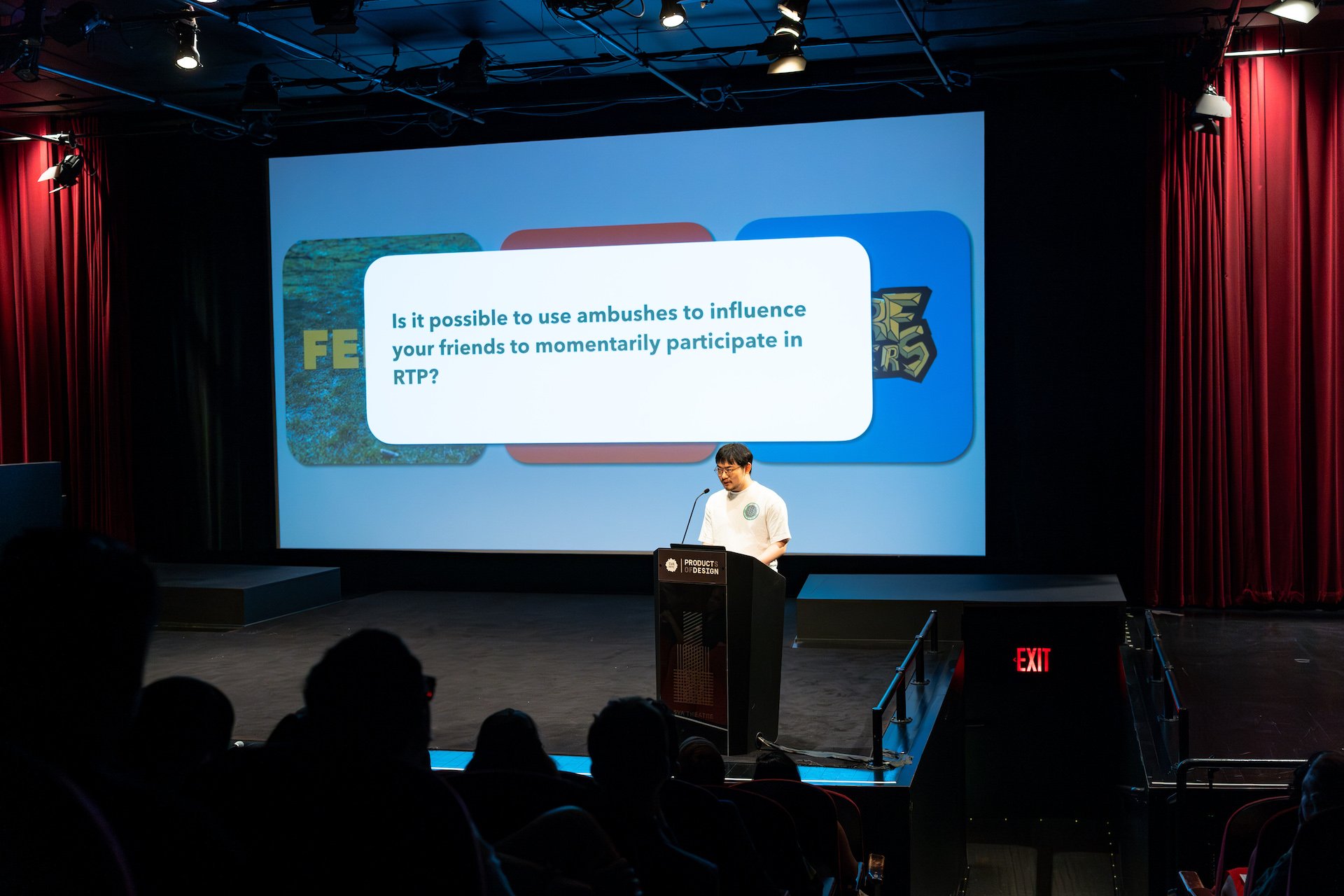
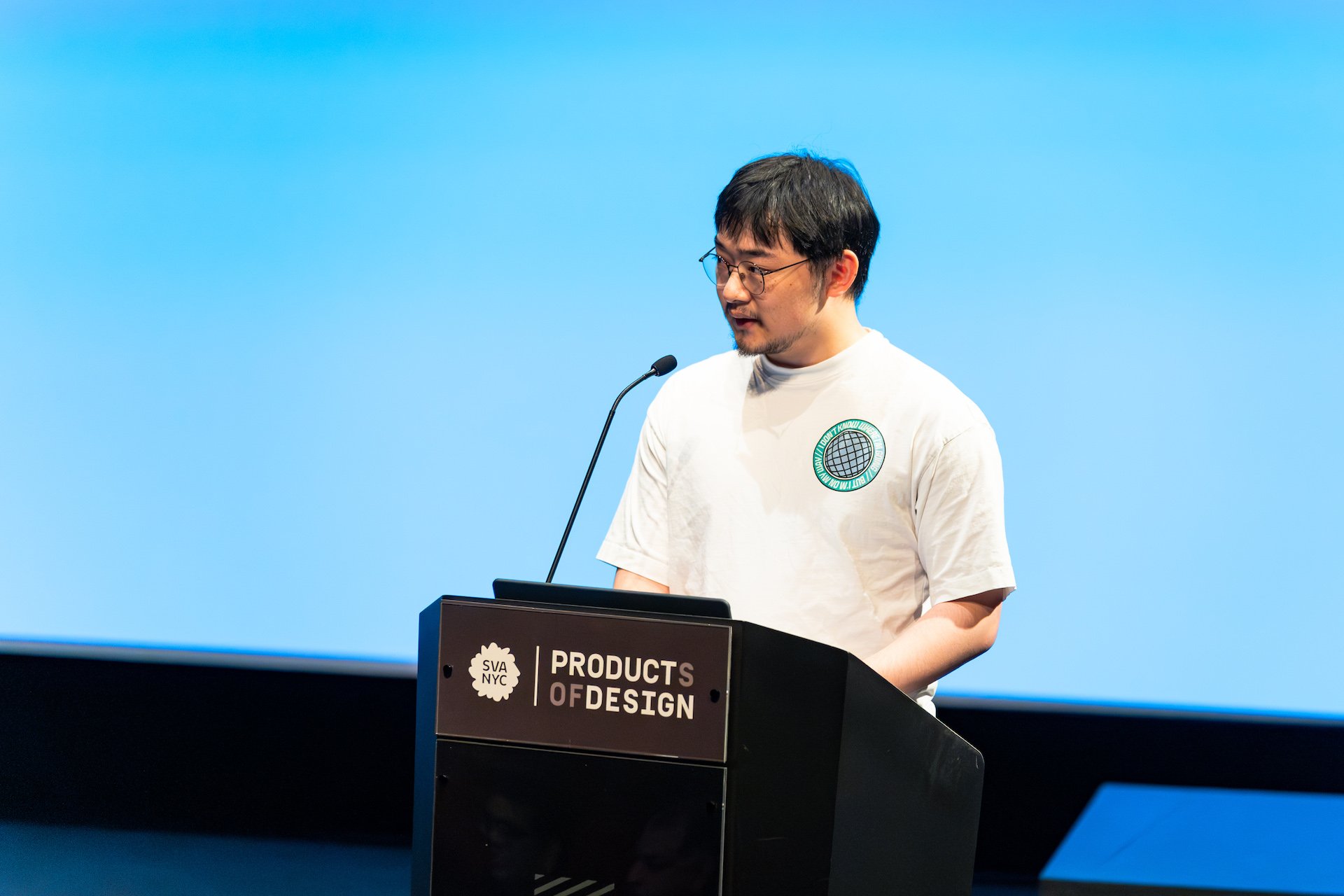
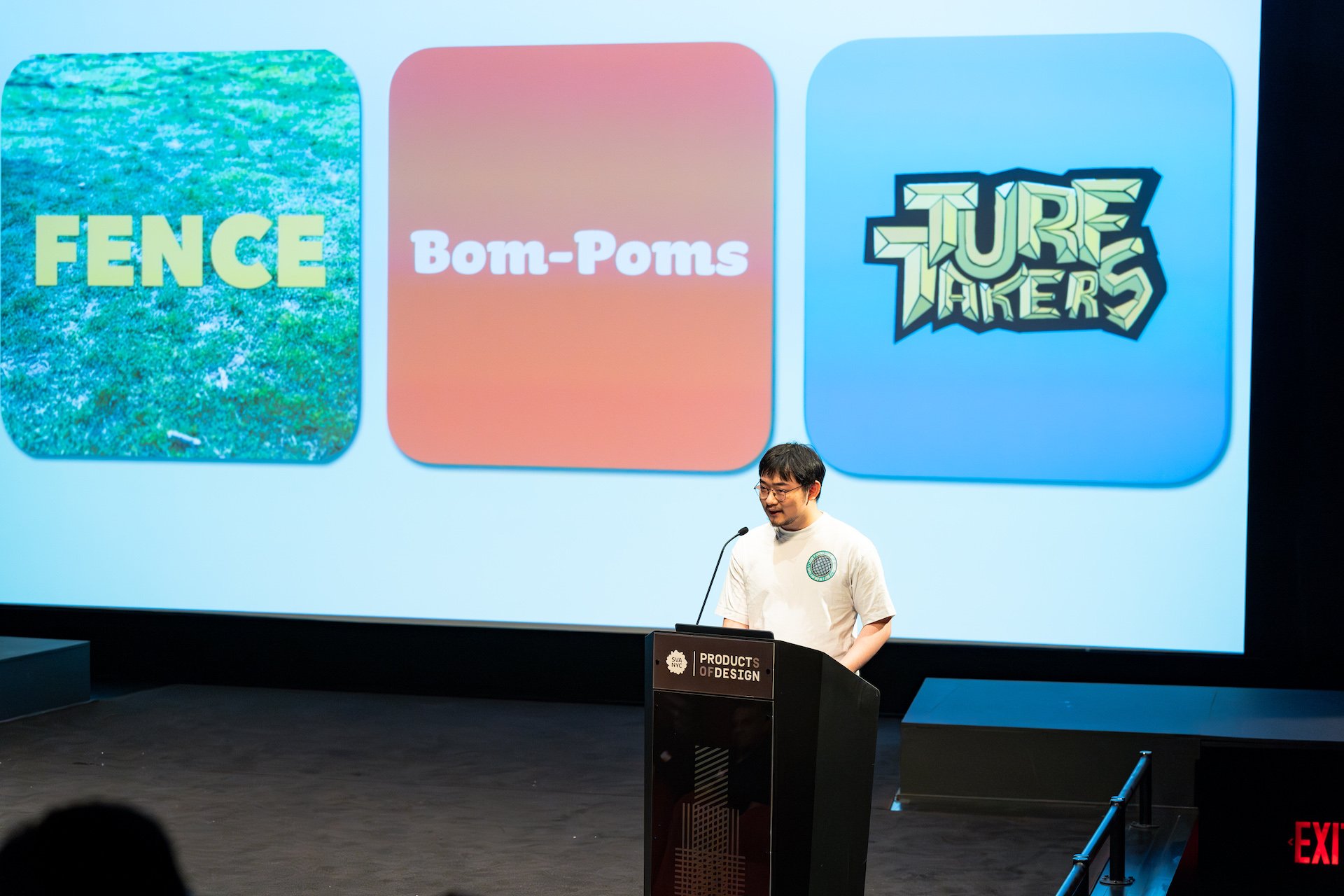
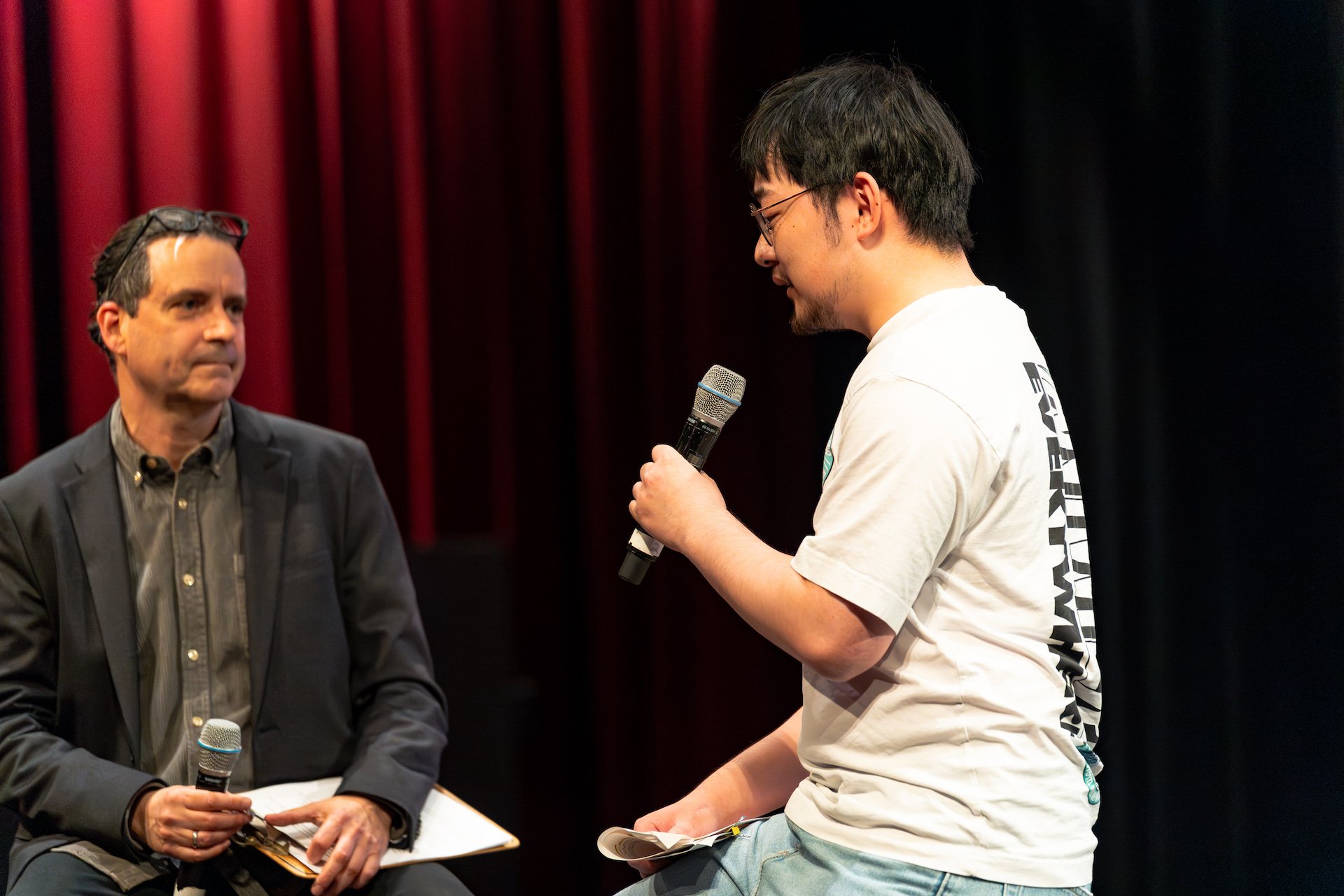
Turf Takers
Turf Takers is a smartwatch-based augmented reality multiplayer online role-playing game (MMORPG). “the focus is on combat between open-world players and player factions.” Brydon explains of his speculative project. “Building off of the ideas of the titans in augmented reality and role-playing games like Pokémon GO and World of Warcraft, Turf Takers envisions a new type of player-versus-player MMORPG.”
Turf Takers involves a game world that correlates to the real world, meaning the game map would match the physical world around you. Within the digital world, the map would be partitioned into sectors where players can dwell. Using their smartwatches, players could see their location in the game world and interact with its creatures and objectives while roaming the physical world.
The game's core mechanic revolves around capturing digital sectors for your character's chosen faction, which grants that faction's players with prestige and in-game rewards.
Upon entering the game, players are prompted to create a customizable digital character. Once they've done this, they can choose an in-game faction and be troubled by other players who have chosen the same faction. When players press "Go!" The game runs passively in the background as they go about their day. The game uses the smart watch's sensors to understand where the player is in the game world and pushes a notification when the player enters a contested or enemy-held zone.
An example of a scenario that might take place in the game is a player named Bryan going out for a walk before running errands and noticing that he is near an unclaimed sector. Using the game map, he can navigate the contested sector, and the game will notify him that he has entered a "capture point." A capture point is a specific area within a digital sector where players can attempt to claim the sector.
The game will then prompt the player Bryan with the actions he must perform to capture the territory. The designated actions might be high knees and chicken noises, which the smart watch's microphone and myriad biometric sensors would be able to detect whether Bryan is actually completing. If he is, the progression bar on his screen will advance.
“This is where it gets interesting,” Brydon remarks. “An enemy player from a different faction can also come into the game and challenge Bryan at his contested point. That player must also perform the designated action of high knees and chicken noises.” Once an enemy player does the movement designated for the capture point, the leading player's progress stalls and the two players are locked in a battle of physicality. In this case, Bryan wins the game due to his better stamina and completes the capture of this point. Upon victory, Bryan would receive a loot box of rewards, including cosmetic items and power-ups for his in-game character. His victory would also imprint on the game map, capturing this digital sector for all players.
Fence!
Fence! is a gladiatorial play-fighting event targeting emerging adults to help them reconnect with rough and tumble play (RTP) and realize its therapeutic benefits. Participants use foam implements to duel it out in one-on-one matches across an hour of non-stop tournament-style play. Fence! encourages the duelists to shed their "grown-up" inhibitions and get into heart-racing combat.
The primary goal of Fence! is to provide a space and framework to allow emerging adult participants to reconnect with RTP. The choice was made to deliberately use props and toys designed for children to establish a tactile connection with an object of light-hearted aggression. Through the play fighting, Fence! seeks to help participants become more cognizant of the benefits RTP brings.
Bom-Poms
Brydon began this project pondering, "Is it possible to persuade your friends and peers into a moment of RTP through the use of an ambush?" This is what eventually led him to create "Bom-Poms.” Bom-Poms are specialized gloves that are oversized and padded, designed to help you instigate unexpected bouts of RTP with your peers. At rest, Bom-Poms can be disguised as a regular pillow. They are a static item of leisure that you can sit on, lie on, and use as you would a regular pillow. You can also bring them to a working space, an academic space, or a hang-out space without fear that their true purpose will be detected. When put into action, however, Bom-Poms become fighting gloves you can rapidly deploy to ambush your friends, peers, and coworkers to participate in some good old roughhousing.
“The gloves went through many stages of design,” Brydon explained of the process. “They required a lot of material testing to find a combination that was light enough to swing around, soft enough not to hurt anyone, and comfortable enough to double as a pillow.” He had to partake in many rounds of testing the product's viability as both a pillow and a striking implement. His peers have struck him with every iteration of the Bom-Poms to test their softness. Eventually, the product would be made with a high-density polyurethane foam core and padded with stuffing wrapped in felt.


























